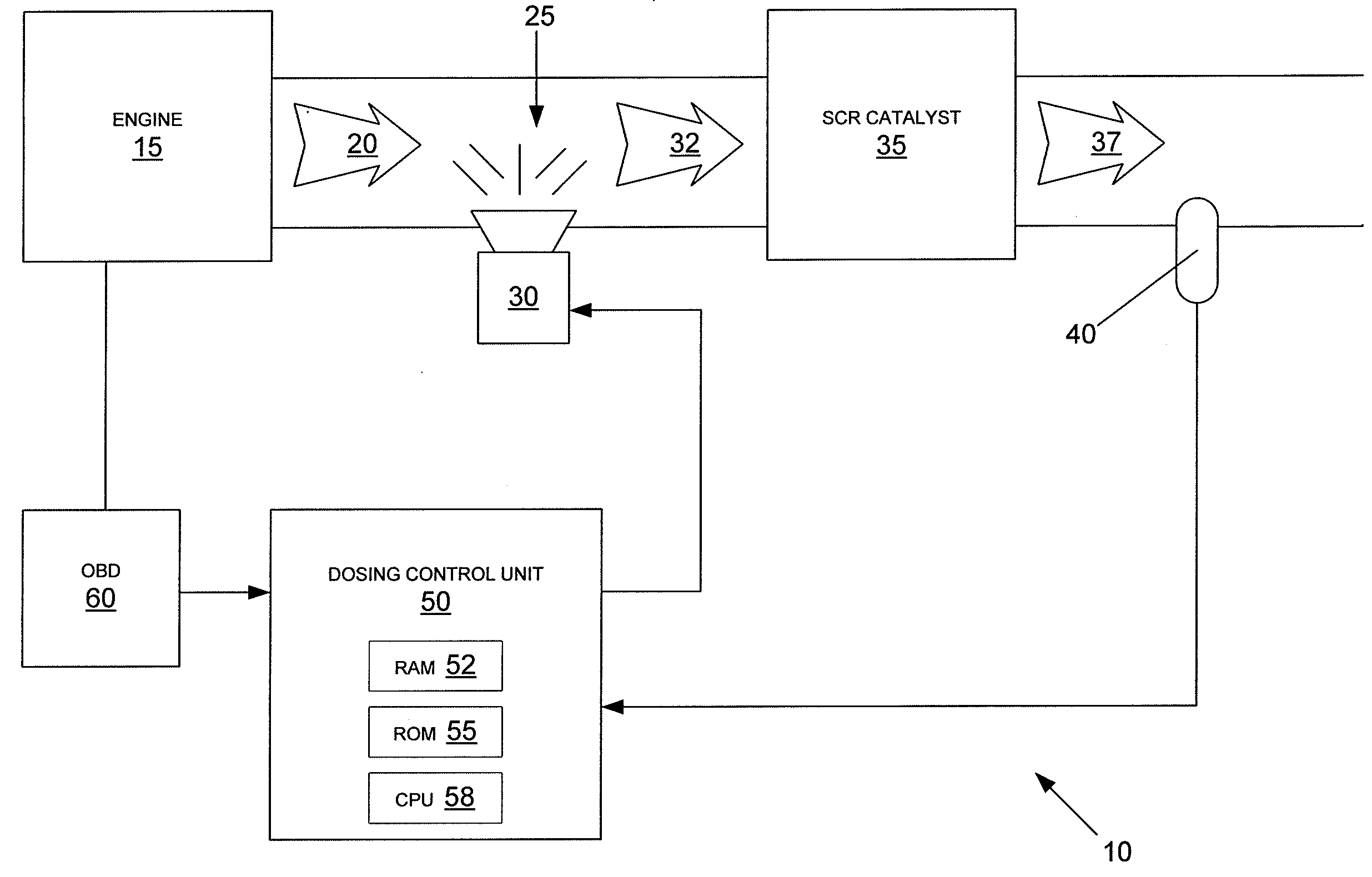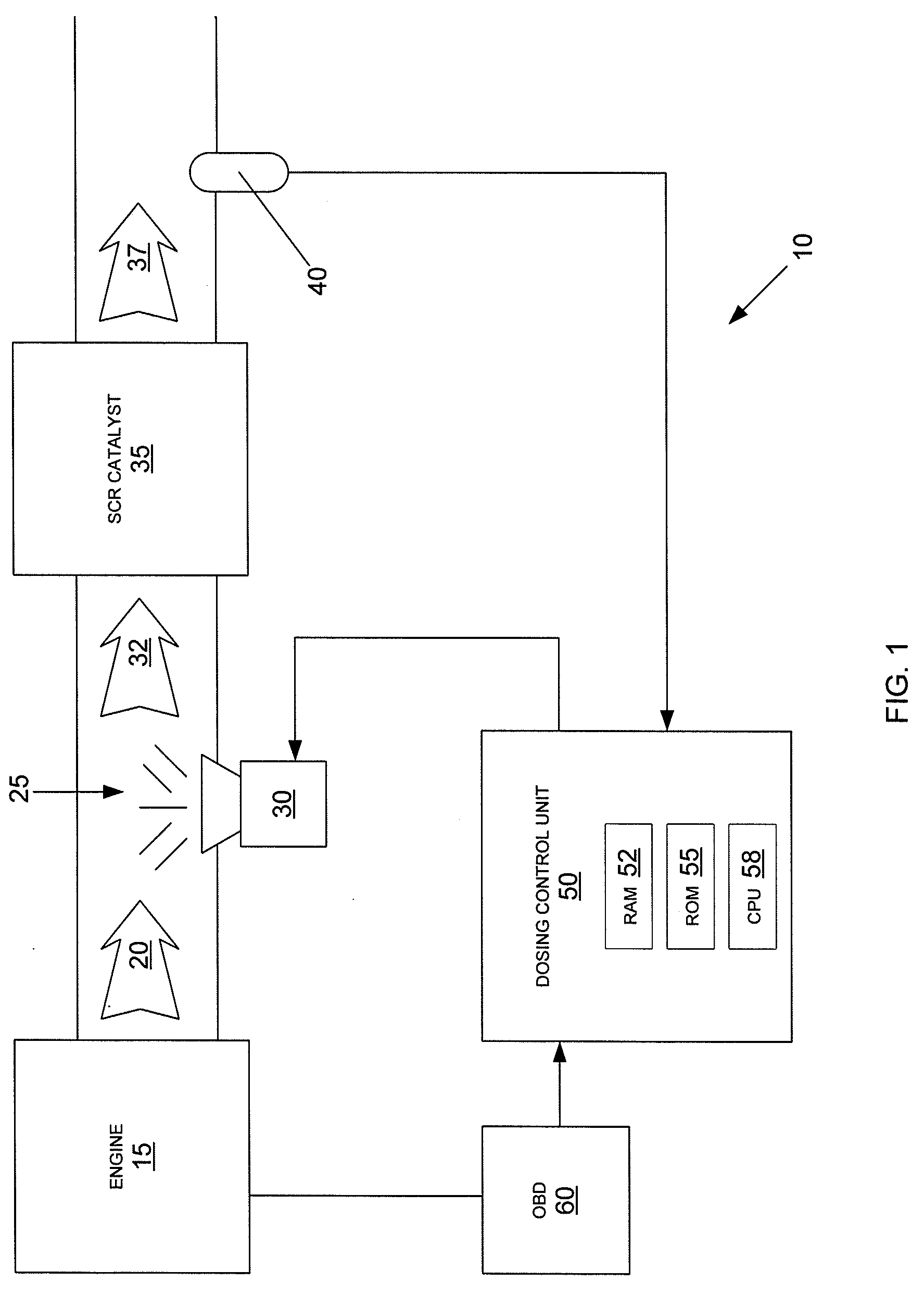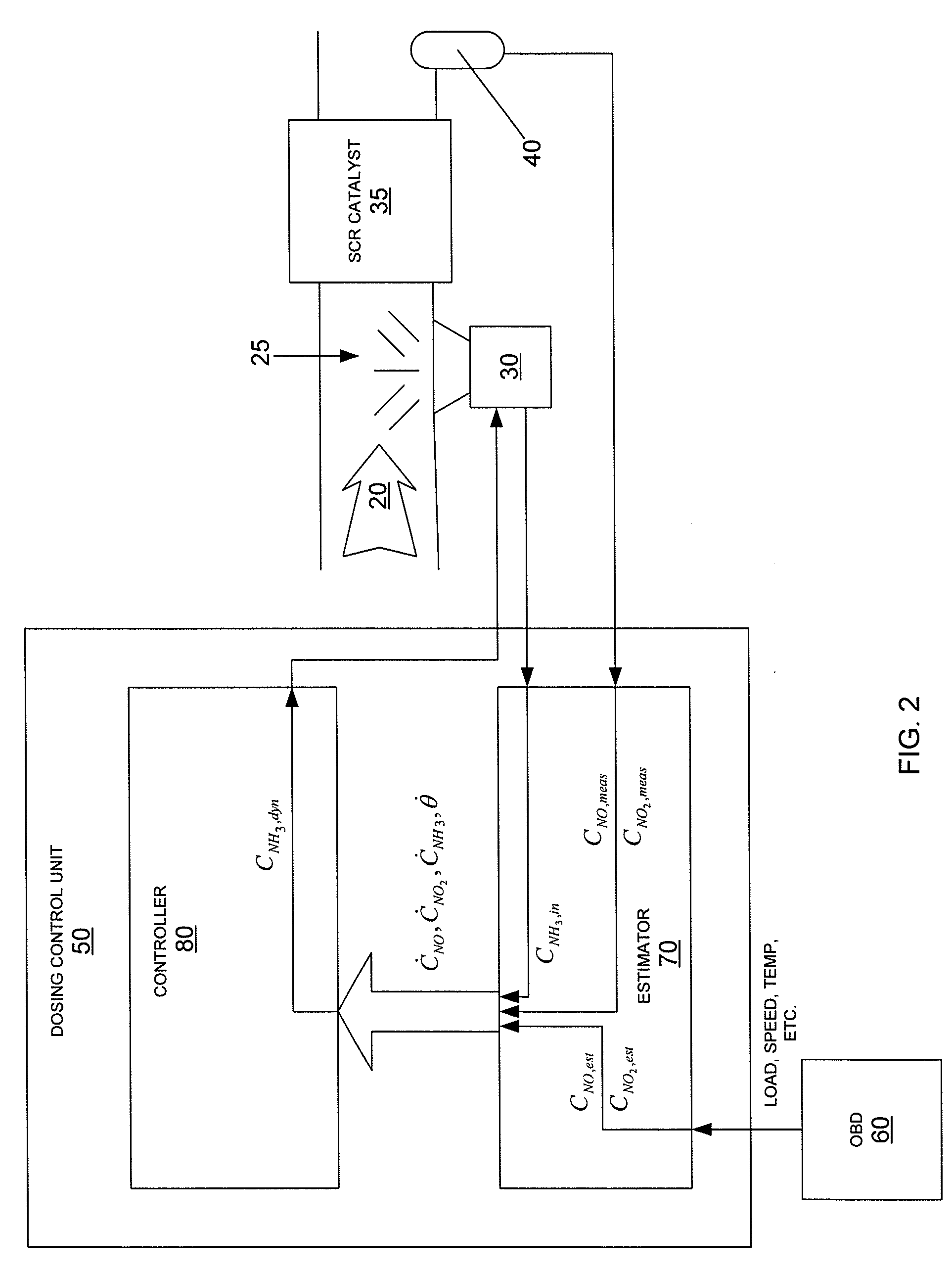NOx CONTROL SYSTEMS AND METHODS FOR CONTROLLING NOx EMISSIONS
a control system and nox technology, applied in the direction of exhaust treatment electric control, machines/engines, lighting and heating apparatus, etc., can solve the problems of reducing the effect of nox emissions
- Summary
- Abstract
- Description
- Claims
- Application Information
AI Technical Summary
Benefits of technology
Problems solved by technology
Method used
Image
Examples
example 1
Verification of Four-State Model
[0063]FIG. 5 depicts an experimental setup in accordance with the invention. A Navistar I6 7.6 L diesel engine 210 was connected to a diesel oxidation catalyst 230 and a catalyzed particulate filter 240, and then outfitted with urea injector 30 and a first SCR catalyst 35 and a second SCR catalyst 38. [Generally an exhaust aftertreatment system would have only one SCR catalyst, as is depicted in FIG. 1.] The exhaust concentrations of NO and NO2 were measured before first SCR catalyst 35 with a first emission test bench 250 and after second SCR catalyst 38 with a second emission test bench 255. The NH3 concentrations were measured before first SCR catalyst 35 with a first Fourier Transform Infrared Spectrometer (FTIR) 260 and after second SCR catalyst 38 with a second Fourier Transform Infrared Spectrometer (FTIR) 265.
[0064]Engine 210 was run at a variety of speed and load conditions as shown in FIG. 6, resulting in a variety of engine temperatures and...
example 2
Controlling NOx Emissions From Industrial Burner
[0068]FIG. 10 is a block diagram of a prophetic embodiment of an exhaust aftertreatment system 310 employing a NOx sensor according to the principles of the invention. The exhaust aftertreatment system 310 will include a urea injector 30, a selective catalytic reduction (SCR) catalyst 35, a NOx sensor 40, and a dosing control unit 50. An oil-fueled industrial burner 315 (used to power a 66 MW steam generator) will produce an exhaust stream 20 containing nitrogen oxides, including NO and NO2. Exhaust stream 20 will move through aftertreatment system 310, exhaust stream 20 will be mixed with an atomized urea solution 25 from urea injector 30 to create urea-enriched exhaust 32. Urea-enriched exhaust 32 will then enter SCR catalyst 35. SCR catalyst 35 will contain metal zeolites arranged in a honeycomb such that the passing exhaust gasses will interact with a multitude of catalytic sites. As urea-enriched exhaust 32 is swept into SCR catal...
PUM
 Login to View More
Login to View More Abstract
Description
Claims
Application Information
 Login to View More
Login to View More - R&D
- Intellectual Property
- Life Sciences
- Materials
- Tech Scout
- Unparalleled Data Quality
- Higher Quality Content
- 60% Fewer Hallucinations
Browse by: Latest US Patents, China's latest patents, Technical Efficacy Thesaurus, Application Domain, Technology Topic, Popular Technical Reports.
© 2025 PatSnap. All rights reserved.Legal|Privacy policy|Modern Slavery Act Transparency Statement|Sitemap|About US| Contact US: help@patsnap.com



